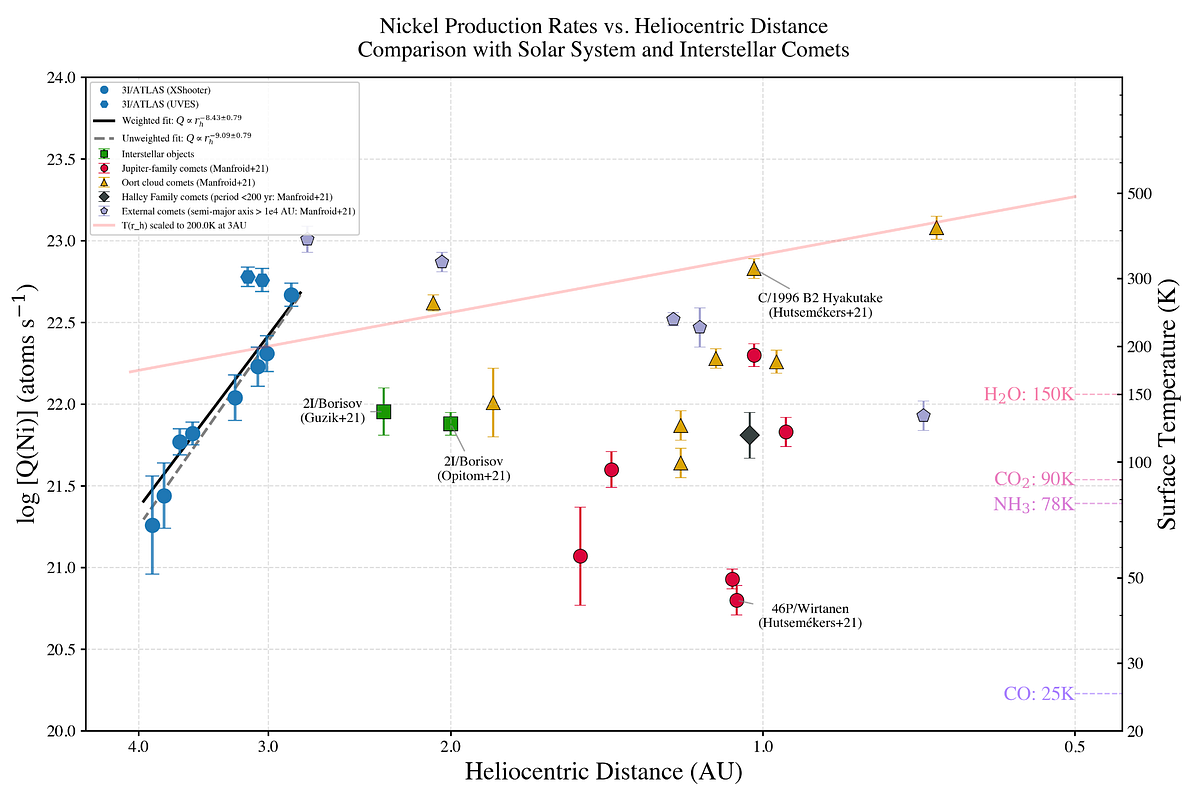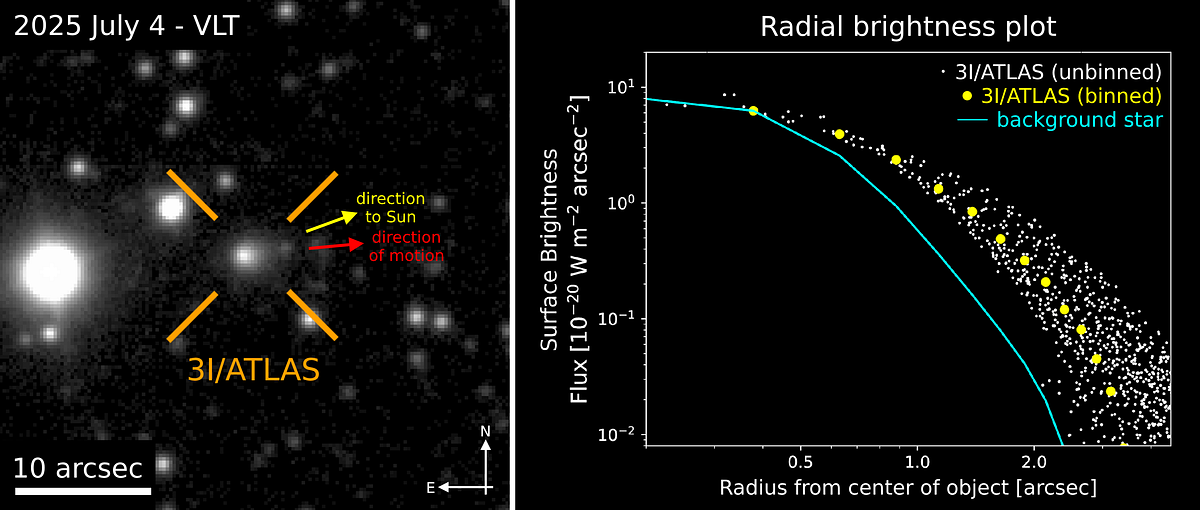Press enter or click to view image in full size (Credit: BBC) Blind dates are exciting because they hold the potential for surprises, especially when dealing with an interstellar date partner of unknown origin. On October 3, 2025, the interstellar object 3I/ATLAS will pass within a distance of 29 million kilometers from Mars. At that time, the HiRISE camera onboard …
Read More »Tag Archives: Loeb
The Challenge of Measuring the Mass of 3I/ATLAS | by Avi Loeb | Aug, 2025
Press enter or click to view image in full size (Credit: Ciyavula) The biggest uncertainty about the interstellar object 3I/ATLAS involves the diameter of its solid-density nucleus. The flux detected by the SPHEREx space observatory at a wavelength of 1 micrometer from 3I/ATLAS on August 8–12, 2025 suggests a huge nucleus or alternatively an opaque dust cloud that scatters sunlight …
Read More »Detection of an Anti-Solar Tail for 3I/ATLAS | by Avi Loeb | Aug, 2025
Press enter or click to view image in full size Deep images of 3I/ATLAS, taken by the Gemini South telescope on August 27, 2025. The different panels show images from short to long wavelengths in the u (upper left), g (upper right), r (lower left) and i (lower right) spectral bands, centered on wavelengths of 0.365, 0.467, 0.616 and 0.747micrometers, …
Read More »A Steeply-Rising Production of Cyanide and Nickel Without Iron in the Gas Plume Around 3I/ATLAS | by Avi Loeb | Aug, 2025
Press enter or click to view image in full size Logarithm of the nickel mass loss rate from 3I/ATLAS (vertical axis) as a function of heliocentric distance (horizontal axis). Blue circles show Very Large Telescope/X-shooter measurements of 3I/ATLAS and the black solid curve is a power–law fit to the data with a power-law index of −8.43±0.79. Colored symbols compare with …
Read More »The First Webb Telescope Observations of 3I/ATLAS | by Avi Loeb | Aug, 2025
Press enter or click to view image in full size Spectrally integrated flux maps for 3I/ATLAS observed by the NIRSpec instrument on the Webb telescope. Panel (a) shows the scattered sunlight around 3I/ATLAS on a scale of a few thousand kilometers (smaller by a factor of a hundred than the size of the CO2 plume detected by SPHEREx) at a …
Read More »What Do We Know So Far About 3I/ATLAS? | by Avi Loeb | Aug, 2025
Press enter or click to view image in full size The Hubble Space telescope image of the interstellar object 3I/ATLAS on 21 July 21, 2025. The glow of scattered sunlight is elongated ahead of the object towards the Sun and shows no cometary tail in the opposite direction. The short, light blue diagonal streaks are background stars that move during …
Read More »3I/ATLAS is Large and Releases Carbon Dioxide (CO2) | by Avi Loeb | Aug, 2025
Press enter or click to view image in full size Three images of 3I/ATLAS, taken by the SPHEREx Space Observatory. The images were observed at wavelengths of 3.0, 4.26, and 4.7 micrometers, corresponding to prominent emission lines of H2O, CO2 and CO gas, from left to right respectively. 3I/ATLAS is undetected in H2O and CO. By contrast, a bright CO2 …
Read More »New Insights in Today’s Research Notes on 3I/ATLAS | by Avi Loeb | Aug, 2025
Press enter or click to view image in full size Avi Loeb’s research notes on 3I/ATLAS (August 24, 2025). Before my morning jog at sunrise, I sketched a model for the dust outflow around the new interstellar object, 3I/ATLAS, which appears as a fuzzy glow in the image obtained by the Hubble Space Telescope on July 21, 2025. One of …
Read More »The Challenge of Obtaining Resolved Images of Interstellar Objects | by Avi Loeb | Aug, 2025
Press enter or click to view image in full size The image of 3I/ATLAS imaged by the Very Large Telescope in Chile on July, 4 2025 (left) along with its projected surface brightness profile. The angular resolution of our best telescopes is about a thousand times worse than necessary to resolve an object which is a few kilometers in size. …
Read More »What Should Humanity Do on the Day After an Interstellar Object is Recognized as Technological? | by Avi Loeb | Aug, 2025
Press enter or click to view image in full size A panoramic image of the 100 billion stars in the Milky-Way galaxy. (Image credit: ESO/S. Brunier) Let us imagine for a moment that the new interstellar object, 3I/ATLAS is a spacecraft, guided to send mini-probes that will arrive at Earth and other planets in the coming months. Given the limited …
Read More »








